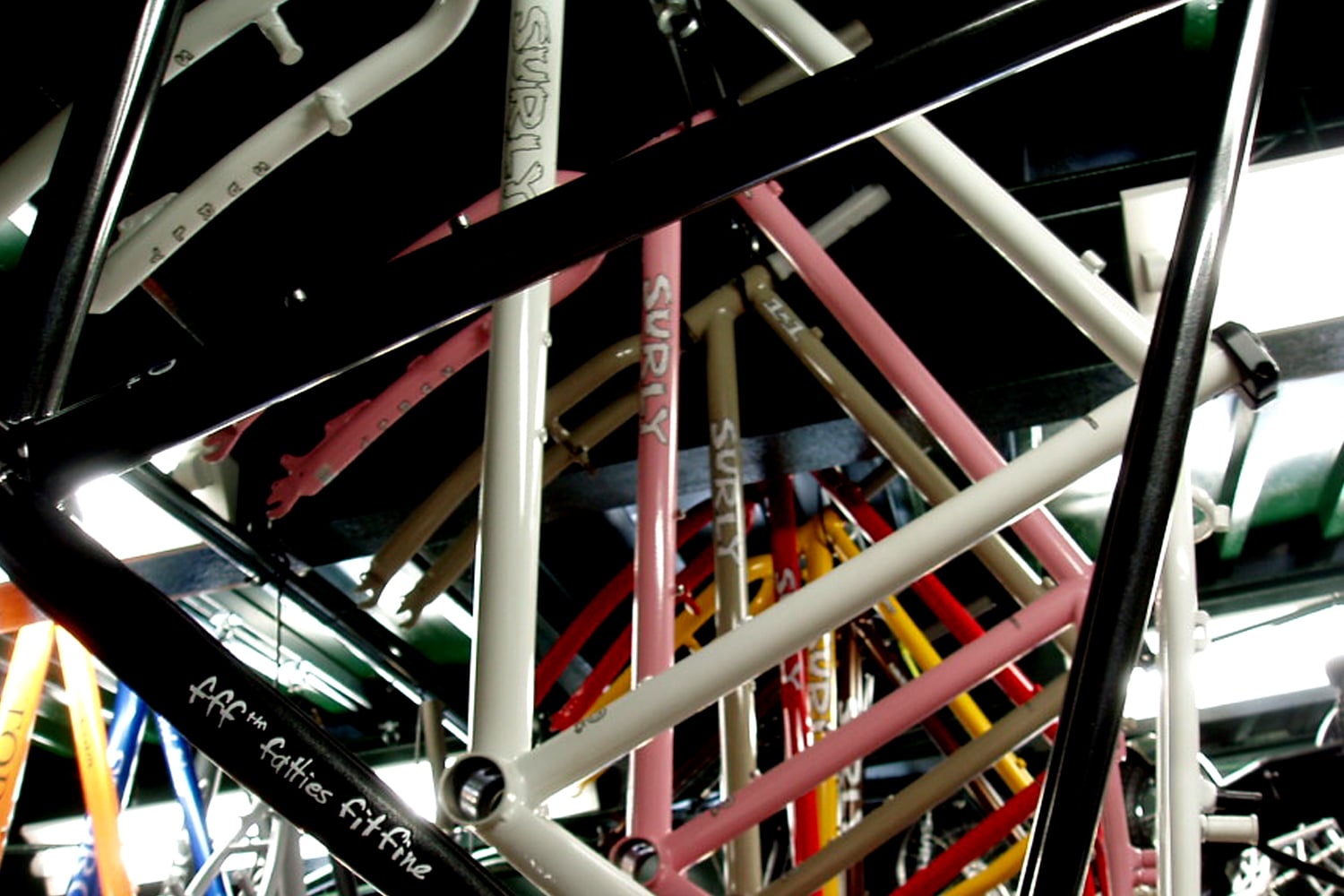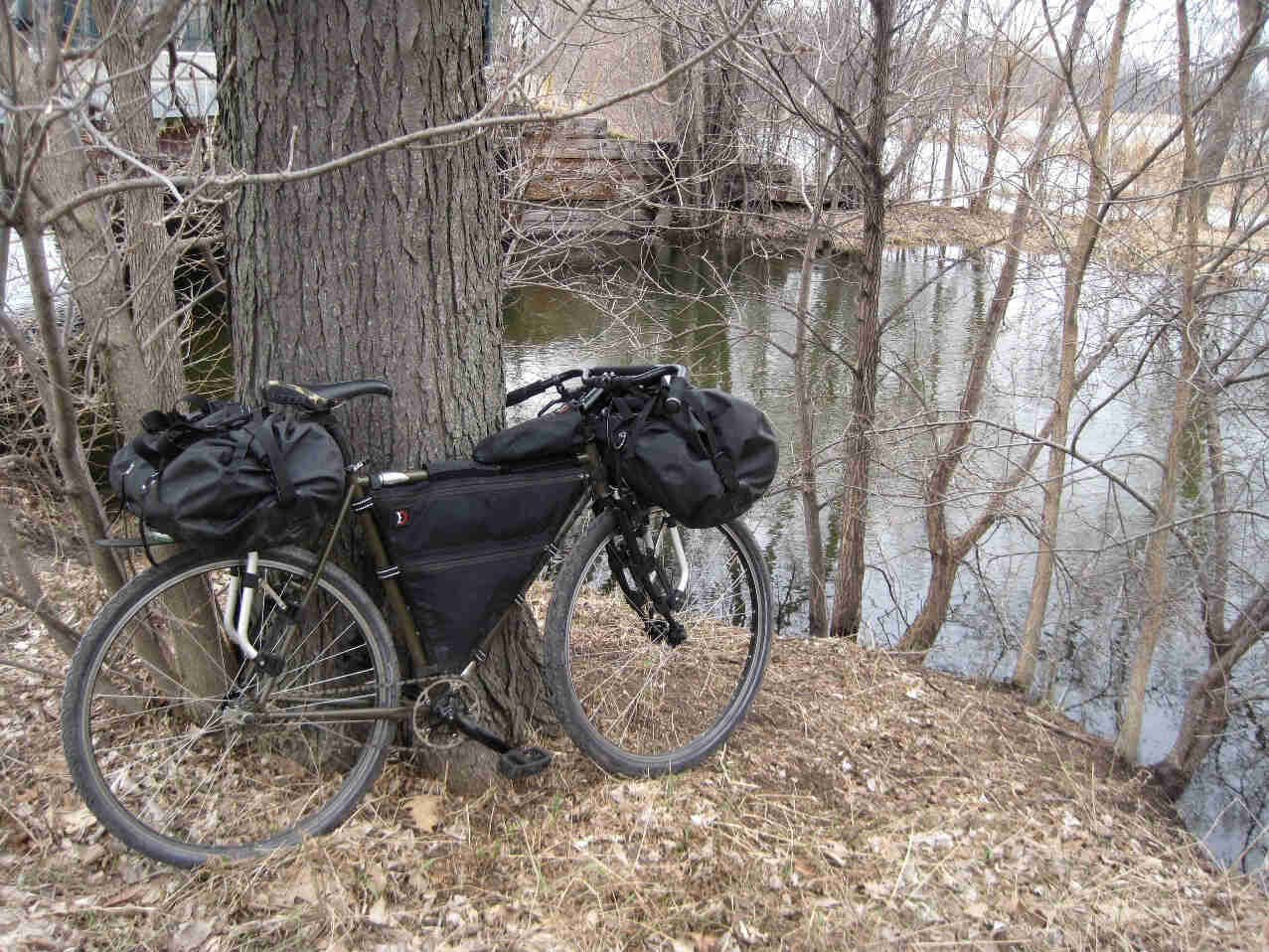
Saturday’s weather forecast looked promising, so I packed up the Travelers Check, Friday night, to paddle the remaining portion of the creek the following day. Instead of using frame bags exclusively, I incorporated Freeload racks and Xtracycle drybags (no longer made) into the packing configuration. The raft, paddle, Thermorest (acting as padding and insulation for the bottom of the raft) and my rain gear was bagged and strapped to the front rack using Surly Junk Straps. My PFD, extra clothing, survival kit, stove, cookpot, and food were strapped to the rear rack in the same fashion. The Revelate Designs frame bag and Gas Tank carried my bike tools, spare tube, camera, phone, water, snacks, and some clothing. Using this system affords me extra capacity for camping gear, if/when I choose to do a bikerafting overnight. And packing time is reduced, because I don’t have to be as careful about putting everything in a specific place – like I did when I was just using Revelate bags to carry everything. I certainly added some weight in exchange for additional volume and packing flexibility. But I’m ok with that.
In addition to the packing system, I made some changes to the Travelers Check…
The 18t freewheel was removed, the wheel was flipped around, and a 17/19t Surly Dingle was installed on the Surly 130mm fix/free hub. I left the 110mm BCD x 42t Surly stainless chainring on the Mr. Whirly crankset and put the chain in the 42t x 17t position. I don’t have much trouble pushing that gear, loaded or unloaded (the bike, that is). If I’m riding off-road or bucking a serious headwind, I’ll likely move the chain over to the 19t cog. Side note: I love the efficiency and durability of an all-steel drivetrain. Aluminum chainrings wear faster than steel rings, causing your chain to wear comparatively faster…which, in turn, wears out your cassette, freewheel, or fixed cog faster than they would if they were used in an all-steel system.
I removed the rear linear-pull brake and its corresponding brake lever. This front-brake-only configuration allows me to separate the bike into 2 halves without the need to mess with a rear brake cable.
I removed the Ritchey riser bar, and installed a Surly Open Bar. I like the ergonomics of multi-position bars…Open Bar, Jones H-Bar, Titec J-bar, Nitto North Road, etc…compared to flat or riser bars. And the Open Bar moves brake levers away from the cargo in a handlebar harness or high-volume bundles lashed to a front rack, so there’s less potential for lever-to-cargo interference. Last week, I struggled with this a bit when I had the raft cinched into the handlebar harness. The Open Bar requires a longer, taller stem to keep the rider (me) in the same position on the bike. I’m using a 120mm x 107 degree Civia 4-bolt stem. In my experience, 4-bolt stems do a better job of preventing the higher-leverage multi-position bars from rotating in the stem clamp compared to 2-bolt stems. The net result of the handlebar/stem swap is faster packing and less likelihood of damage resulting from lever-to-cargo abrasion.
To minimize overall raft/cargo width, the seat and seatpost get slammed all the way down into the frame when the bike is attached to the raft. Installing a Salsa QR seatpost clamp eliminates the need for a hex wrench. Now, I can perform the bike disassembly/assembly functions with one tool – the S & S coupler wrench. One end of the wrench loosens and tightens the couplers; the other, a 15mm open end wrench, removes and installs the left pedal, which gets moved to the inside of the crank arm so it rides higher above the water while the boat is under way. I could simply put the pedal inside one of the bags, too, but keeping it attached to the bike works better for me…less chance of losing the washer, no grease on the inside of a bag, no chance of the pedal damaging the bag or its contents. The right (drive side) pedal doesn’t need to be removed.
I left the house around 1 o’clock Saturday afternoon and made a brief stop at the liquor store. I grabbed a 4-pack of canned cider for nourishment during my travels. It just seemed like the appropriate beverage for the conditions of the day. A hearty stout would have been good too.
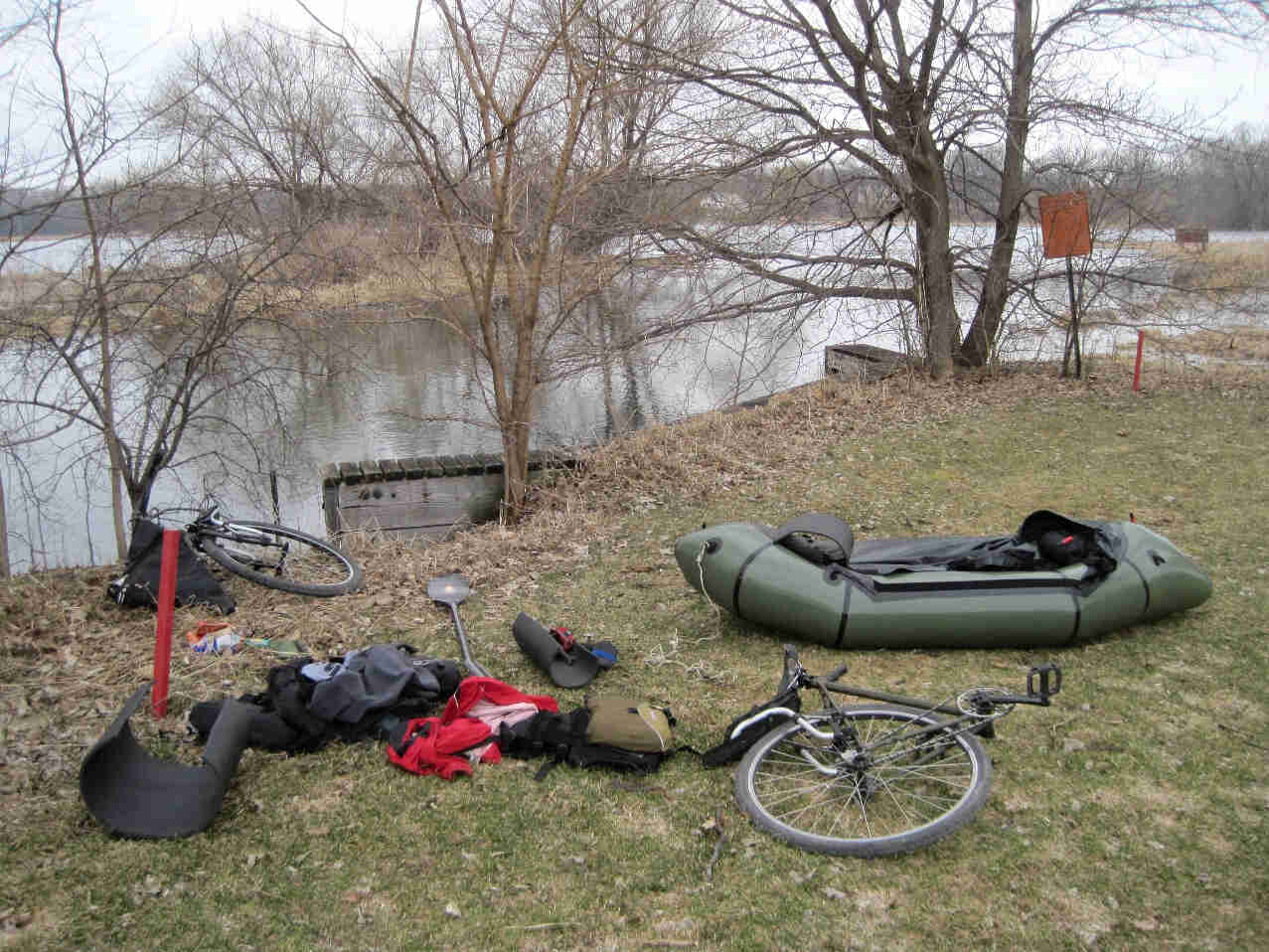
I got to my launch point on Meadowbrook Lake - the spot where I finished my last paddle on April 1st - at 1:57. The bike and boat were finally reconfigured for the float and in the water at 2:52. I didn’t really save any time on this facet of the trip, compared to last week’s prep for launch. But that’s because I hadn’t practiced packing the boat with Freeload racks attached to the bike. My trial and error process added some time.
As I worked on the bike and boat, an intermittent parade of golfers, wearing their finest golfing Garanimals, rode by in their cute little carts. I could tell that they were struggling to figure out what the hell I was doing. It probably looked like I was setting up camp there. I’m sure it made some of them nervous. Sometimes, it’s fun being an unknown quantity.
I pushed off and started moving with the current. The lake crossing was pretty slow and mellow, but I was just happy to be out on the water again. The water started moving faster as the lake narrowed and transitioned back into creek.
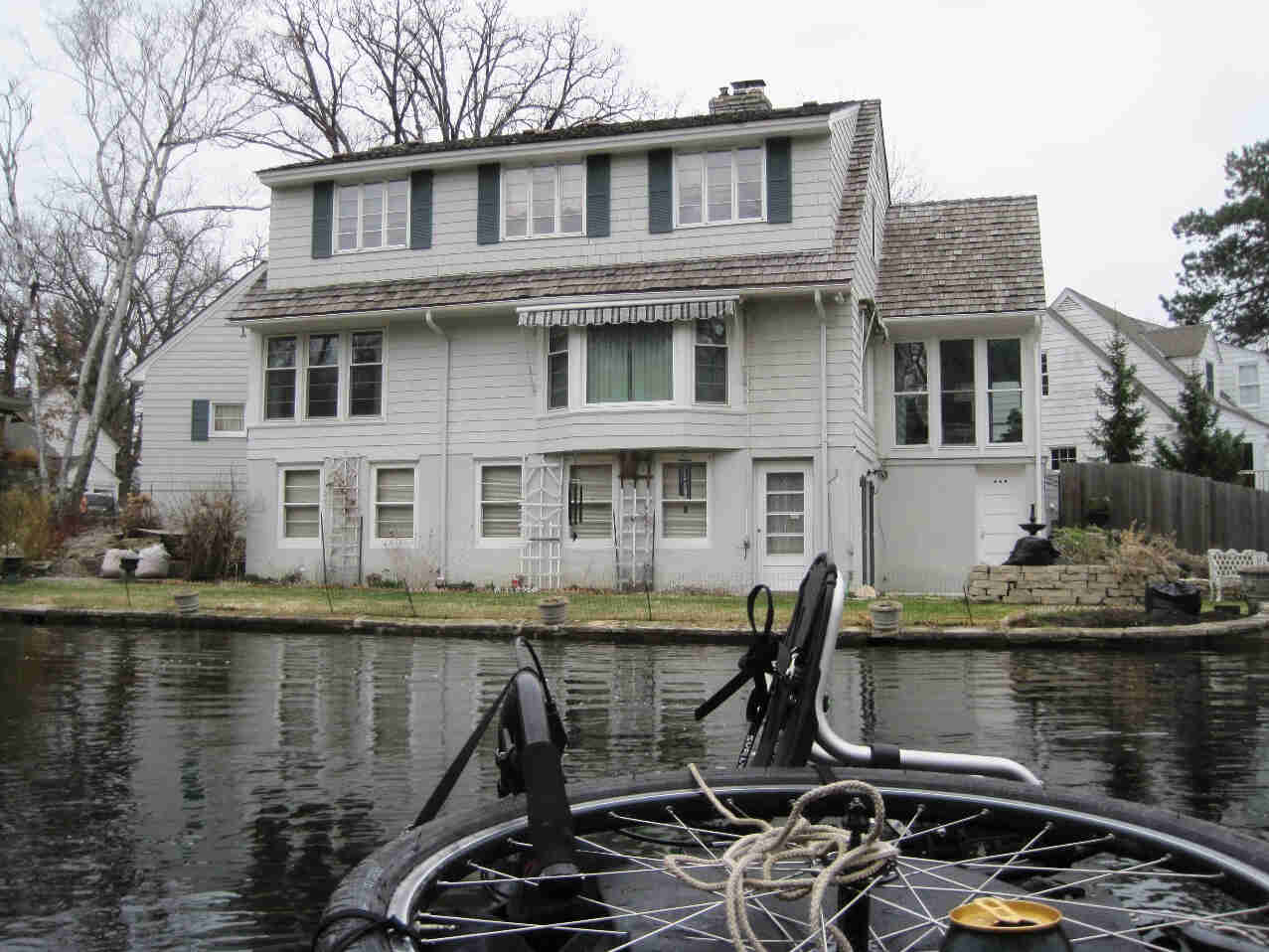
The water was really high in many areas. Pallets of sandbags fill lots of yards and driveways along the water's edge. Some houses are inches away from trouble.
The ever-winding creek eventually led me to the mandatory portage at the dam in Utley Park. I made two trips. First, I shuttled the paddle and my stern-mounted dry bag. Then, I moved the bike and raft...still strapped together.
I launched again in the turbulent water below the dam and appreciated the increased challenge of the comparatively rough and fast water. It wasn’t long before I was at another portage. This one, at 54th street, is optional for some. It’s mandatory for me. Fast water, no helmet, bike strapped to the front, and no knowledge of the bottom features…it looked like a recipe for disaster if done incorrectly. I have no regrets about my decision to portage vs. paddle.
Again I started in fast current and quickly progressed toward home.
Because it’s early in the year, there are lots of trees and branches in the creek…sweepers and strainers. They will likely be removed when the water recedes a bit. Until that happens, one has to remain acutely aware of what’s downstream. Fortunately, the packraft is a nimble craft. And it’s pretty easy to navigate around obstacles. Plus, I’m slowly becoming less of a hack, and I’m able to hold a line most of the time.
90+ bridges - footbridges to freeway bridges - cross the creek from beginning to end. Many have served as meeting points and refreshment spots for me over the years. It’s interesting to see them from water level at the center of the creek. When the current is brisk, I find it difficult to snap pics and pilot the raft at the same time. But I was able to capture a few images in the digital realm. They certainly aren’t the most scenic bridges on the route, but they hold memories for me…
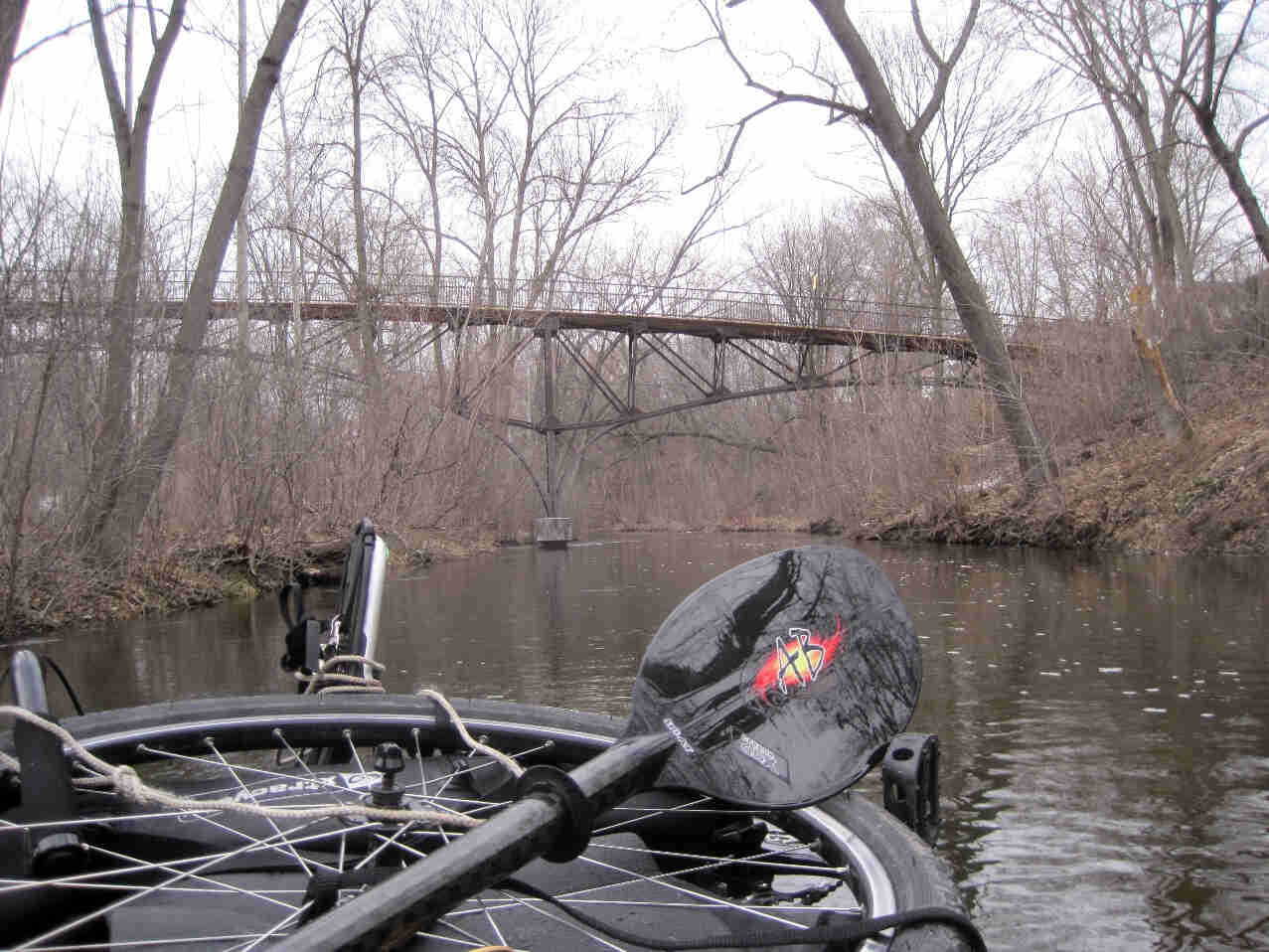
Bryant Bridge, a crossing for many cycling commuters, was closed for repair last year. That kinda sucked.
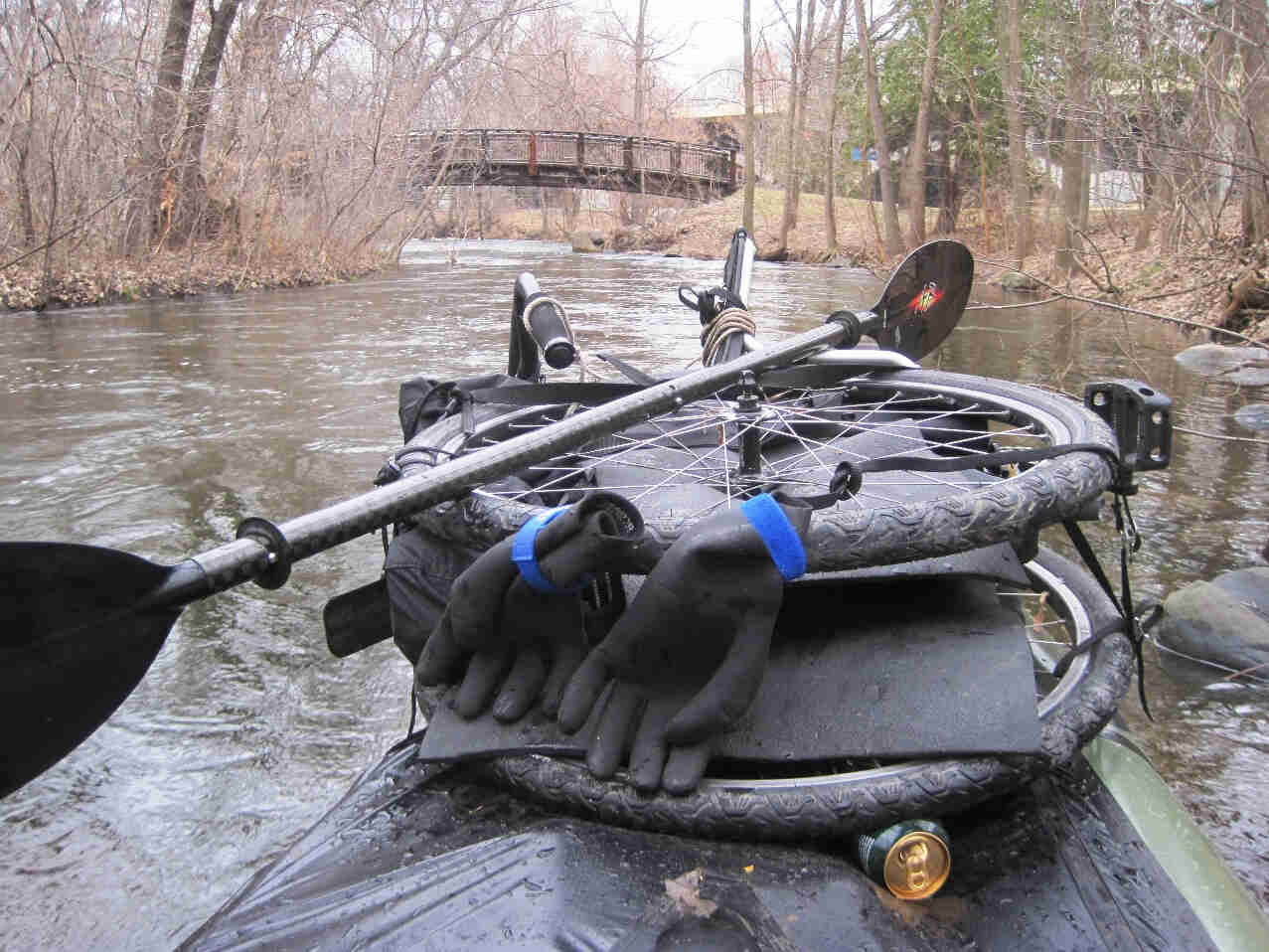
The bridge shown above is where I often stop for tea on my way home from work…when the weather is cooperative. Yes, I lift my pinky when I drink from my cup. Got a problem with that? I'm a few miles to my house from this point. A little caffeine and sugar in the system usually give me a nice boost for the remaining portion of the ride. I have other tea spots along my various commuting routes. But this one gets used most.
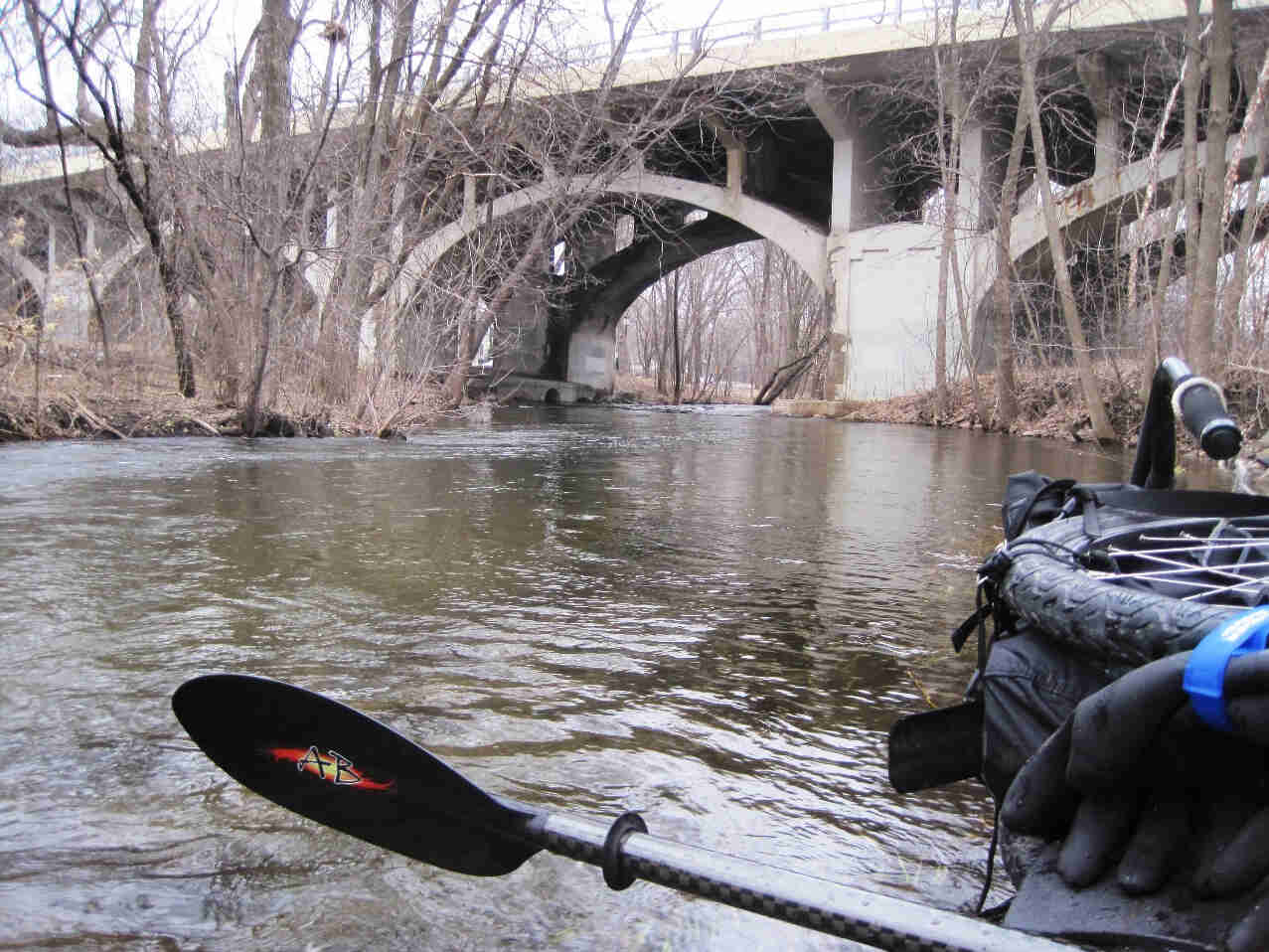
The Nicollet Avenue bridge. It’s one of our Troll Club bridges. I stopped under it last night for tea, because the wind was gusting and a cold rain was starting to fall.
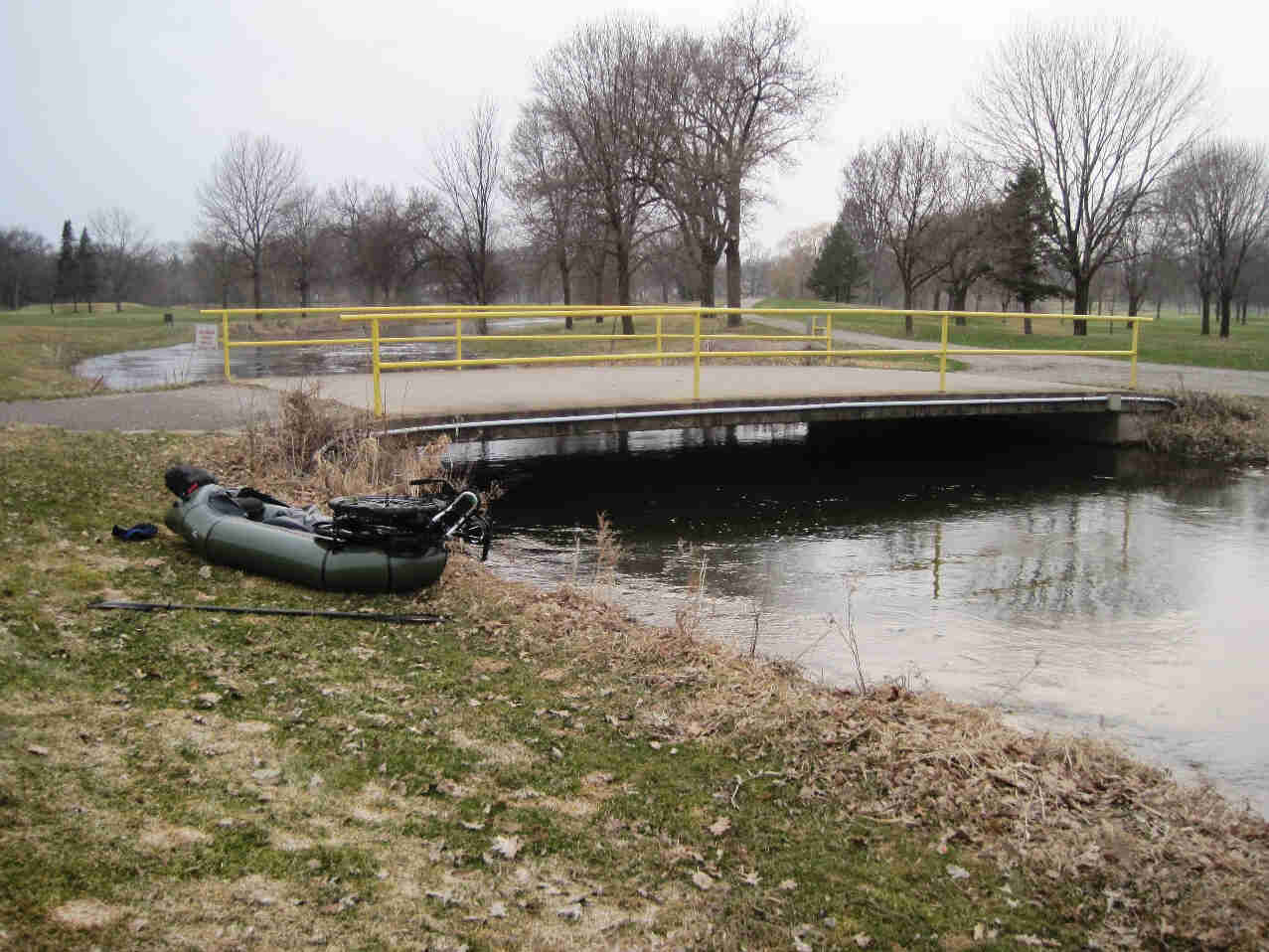
My third and final portage resides close to home. The bridge on the golf course was simply too low to allow passage of a raft with a bike strapped to it. I was sitting 4” too high in the water. It would have been fine without the bike. I didn’t mind, though. The take-out spot was grassy, and it had a gentle approach. It was nice to get out of the raft and stretch my legs a bit, and the portage was less than 20 feet in length. I was back in the water and underway in a few minutes.
I savored the last section of creek, knowing I was approaching the end of the line. At 7:40pm, a few minutes before sunset, I arrived at the last canoe landing...12+ miles from where I started. I would have experienced Minnehaha Falls – a 53-foot drop into the creek gorge – the wrong way, if I’d kept going. I cooked some noodles on my Esbit stove, drank my last can of cider, and packed up for the 2-mile ride home.
I got home at 9:20. Another good session.
That was fun. I’ll likely paddle that section again when time and weather permit. Maybe, today. It’s snowing now. We might get 1-2” of slushy snow by morning. But the fake-tanned local TV weatherman is predicting we’ll see sun by late morning/early afternoon. And the wind should be pushing me home while I’m in the water. More snow means more water in the creek. Sounds good to me.
 Surly Bikes
Surly Bikes